Years after saving the bald eagle, 82 of them could be killed in NY wind farm projects
The bald eagle all but vanished from New York in the 1970s.
The pesticide DDT, ingested by eagles from fish snatched from the state’s lakes and rivers, thinned the shells of their eggs, causing them to soften before they could hatch.
In 1970, there was just one eagle nest in New York, at Hemlock Lake south of Rochester. It wasn’t producing any young. Their eggs were too damaged by DDT.
The eagle became endangered, and, in 1976, as the national bird gained a prominent role in the nation’s bicentennial celebrations, New York officials wondered if eagles would ever inhabit the state again.
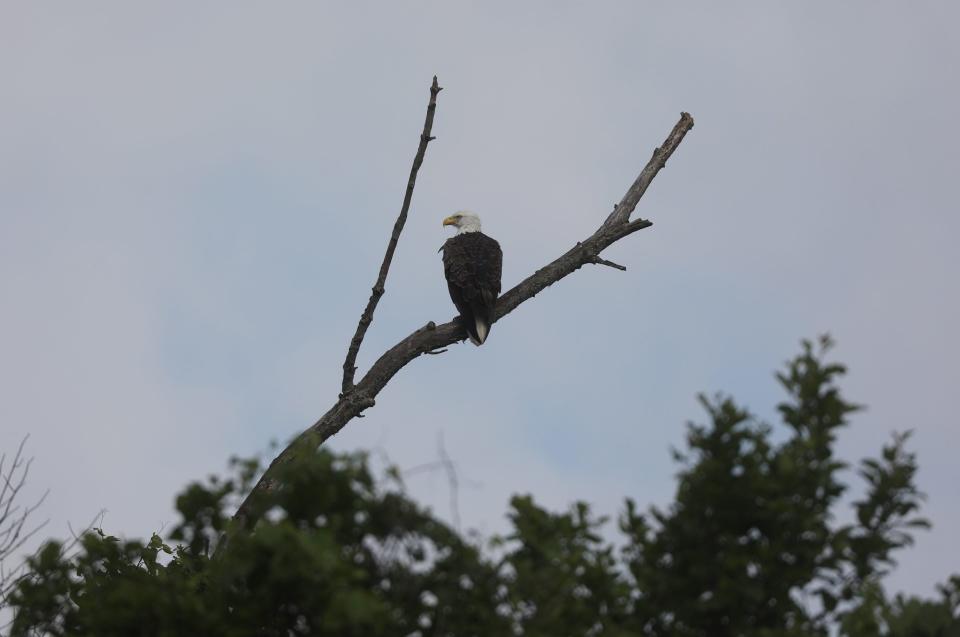
But the state embraced the challenge like few others, with an ambitious rehabilitation plan.
Young eagles would be brought from Great Lakes states with plentiful eagle populations − Michigan, Minnesota and Wisconsin − to the Montezuma National Wildlife Refuge in Seneca Falls, New York.
There, atop a 36-foot tower, baby eagles were fed and cared for by a four-person team of wildlife biologists careful not to get too close so the birds wouldn’t confuse them for their parents.
It worked – 23 bald eagles were released after five years. By 1999, there were 10 eagle nests, and by 2017, 323 breeding pairs of eagles were living in nests across New York.
"This news confirms that our rivers, lakes and forests are capable of supporting our nation's symbol for generations to come,” Basil Seggos, the head of the state Department of Environmental Conservation, said in 2017.
Less than a decade later, Seggos’ DEC was approving a plan his own experts say will likely kill dozens of bald eagles.
Green energy plan could kill dozens of NY eagles
The decision came during the permitting process for the Alle-Catt Wind Energy project in western New York and the Canisteo Wind Energy Project in Steuben County, the two largest wind farms ever approved by the state.
In all, the DEC estimates 82 eagles will be killed during the 30-year life of the projects – 41 each.
For the Alle-Catt project, 83 wind turbines extending 600 feet into the air will be scattered across 30,000 acres of private land in Allegany, Cattaraugus and Wyoming counties, touching six towns. Canisteo’s 117 wind turbines will be spread over six towns and 25,000 acres of private land.
The DEC’s backing came with a caveat. The developer, Chicago-based Invenergy, would need to come up with a net conservation plan. Invenergy recently agreed to pay nearly $2 million to Cornell University to rehabilitate dozens of injured eagles and return them to the wild.
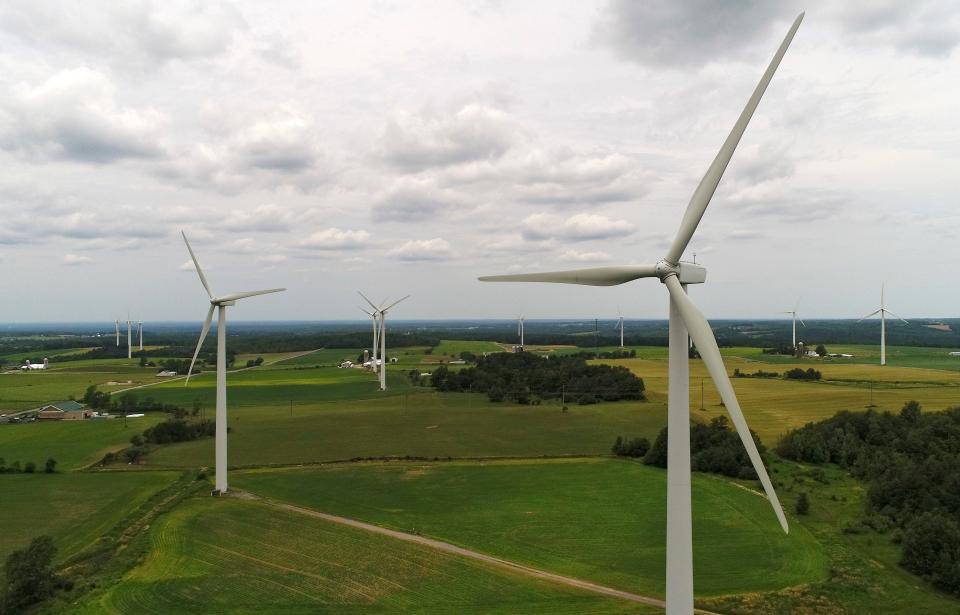
In letters to the state Public Service Commission, opponents questioned how the DEC’s decision squared with New York’s long history of standing up for the nation’s symbol of freedom.
Cattaraugus County Legislator Ginger Schroder, a longtime opponent of the Alle-Catt project, suggested the payout was “blood money” in a letter to state officials in May.
“How wonderful for them: a true win-win for Invenergy/Alle Catt and a lose-lose for the Bald Eagles in our area, New York State taxpayers and for my constituents,” Schroder wrote. She and her husband own a poultry farm in Farmersville where more than a dozen wind turbines will go.
“God help you if you shot one of these endangered birds,” wrote Norman Ungermann of Cuba, a former Allegany County legislator. “Punishment for doing so was AND STILL IS thousands of dollars in fines and/or jail time! I can also remember that you could not disturb a nest and had to stay some 300' away from it or be fined. Now, (in the name of 'green energy') we are justifying the killing of these birds???”
New York’s success in achieving some of the nation’s most ambitious clean energy goals rests largely on whether it can produce enough wind and solar power upstate to reverse the downstate region’s near-total reliance on fossil fuels. The plan is for wind and solar power generated on upstate farmland to be sent down to the lower Hudson Valley and New York City over a network of high-voltage transmission lines.
But in western New York, that plan is − quite literally − on a collision course with the state’s duty to protect its wildlife, a legacy underscored by the eagle’s comeback. And at the center of it all is the Department of Environmental Conservation, which finds its dual priorities – protecting the environment and protecting wildlife – in conflict.
She brought bald eagles back to NY
Tina Milburn Morris had to move carefully, making sure the eaglets didn’t mistake her for their parents. If they believed humans to be the source of their food, they could attack them in the wild.
On a platform built 36 feet in the air at the Montezuma National Wildlife Refuge, Morris rigged a blind through which she could deliver eagles their food − fish attached to a barbecue fork.
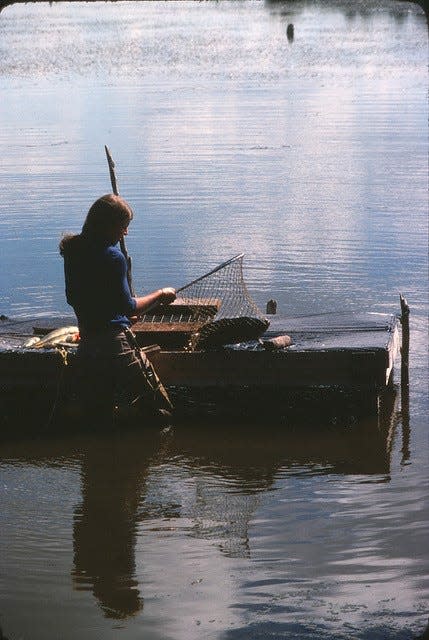
It was 1976 and Morris was a graduate student at Cornell, studying wildlife biology.
Morris pitched the idea of “hacking” bald eagles − or the practice of raising and releasing bald eagles in the wild − to Tom Cade, a Cornell ornithologist who pioneered the technique in his work with the peregrine falcons. She would be part of a four-person team that would work with the DEC and members of the U.S. Fish and Wildlife Service.
They chose Montezuma since there had been eagle’s nests there since 1959 and it was close to Cayuga Lake and Cornell.
Hacking had worked with falcons, but would it work with eagles? Eagles feed and fly differently and there was no telling whether they could live without their parents around.
They decided to bring eagles from the Great Lakes, where DDT had not taken the toll on the population that it had in the northeast.
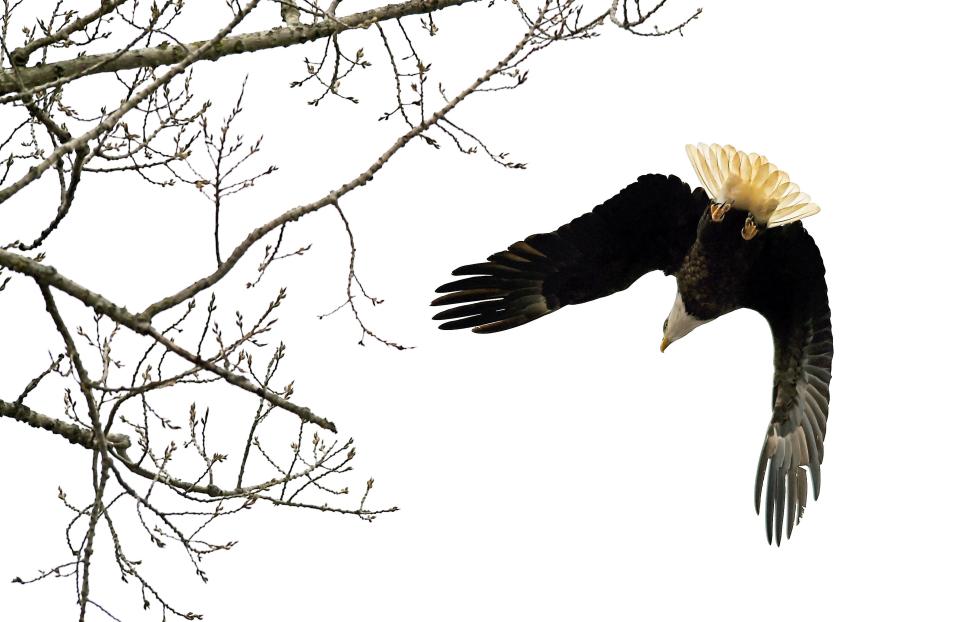
In 1976, two birds – a male and female – were brought in from Wisconsin. By summer they were fishing in the refuge. Still too small and weak to fly, Morris regularly retrieved them from the marsh and cattails in the refuge. By October they flew off by themselves.
“How to Hack Bald Eagles” was the title of her thesis.
Morris, now 74, got her graduate degree from Cornell in 1978 and moved to Andover, Massachusetts where she raised her children and spent 23 years teaching in an elementary school. But in retirement she decided to write a book about her work.
In the fall, she returned to Montezuma for the first time, meeting with bird watchers and Fish and Wildlife workers who lecture on the refuge’s central role in the eagle’s comeback.
“I heard there were all these eagles in Montezuma and so I called them and they had no idea who I was,” she said.
The tower she once climbed was still there but it didn’t look sturdy enough to hold her. And she didn’t care to try.
“It was incredible to me to think that there was nothing in the northeast when we started and then all of a sudden there were eagles everywhere,” she said.
Today, there are six eagles’ nests on the refuge and 29 if you count the surrounding wetlands.
Western NY towns back the eagles
Melanie Brown took a stand against the Alle-Catt project in her successful bid for town supervisor last year in the western New York town of Farmersville.
Hers was the lone voice on the five-person council that was opposed to the project.
“I’m the only one and they hate me,” Brown mused recently, standing beside a field near her home where Invenergy has plans to build a wind turbine. “They spend more time attacking me than doing productive business.”
Farmersville is aptly named.
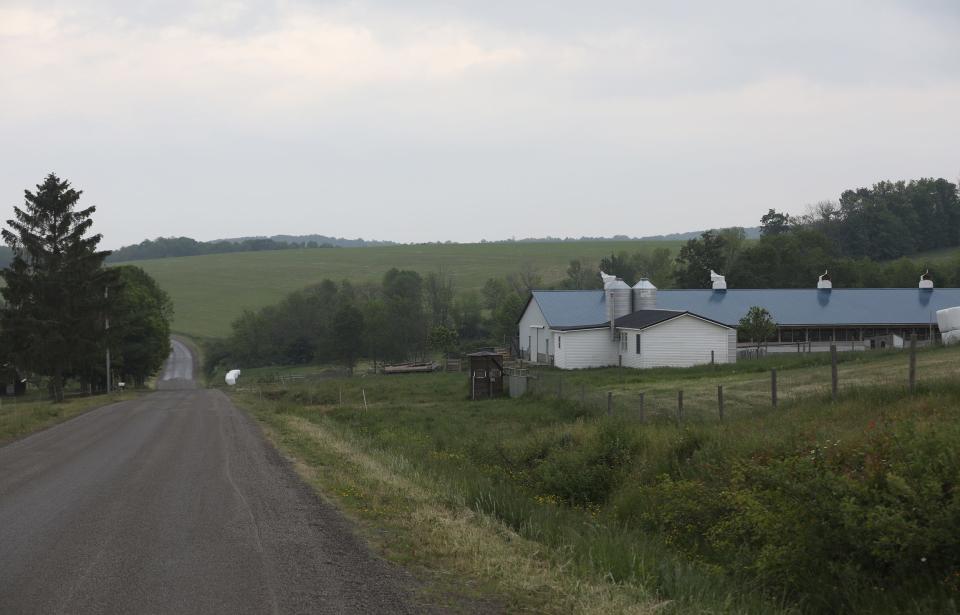
The Amish still use horse-drawn wagons to work their fields and deliver milk to markets, scattering evidence of their trips on local roads. Clothes are hung from lines and wood is stacked.
Tidy homes and ramshackle barns interrupt acres upon acres of green meadows, colored by fields of wildflowers.
Brown says her neighbors don’t mind feed silos that extend hundreds of feet into the air. Wind turbines of 600 feet or more are another thing.
“They don’t want to see a wind turbine when they come out their front doors every day,” Brown said. “And for similar reasons I don’t want to see wind turbines destroy our landscape.”
Her great grandparents arrived here in the 1880s to run a dairy farm and a cheese factory. She left to work as a corporate lawyer in New Jersey and returned when she retired a few years ago.
Project supporters say the tax revenue Invenergy will bring to the town will help fix some notoriously bumpy local roads.
Invenergy estimates it will deliver $9 million in annual revenue to the towns where the wind turbines will go and enough power for 134,000 homes.
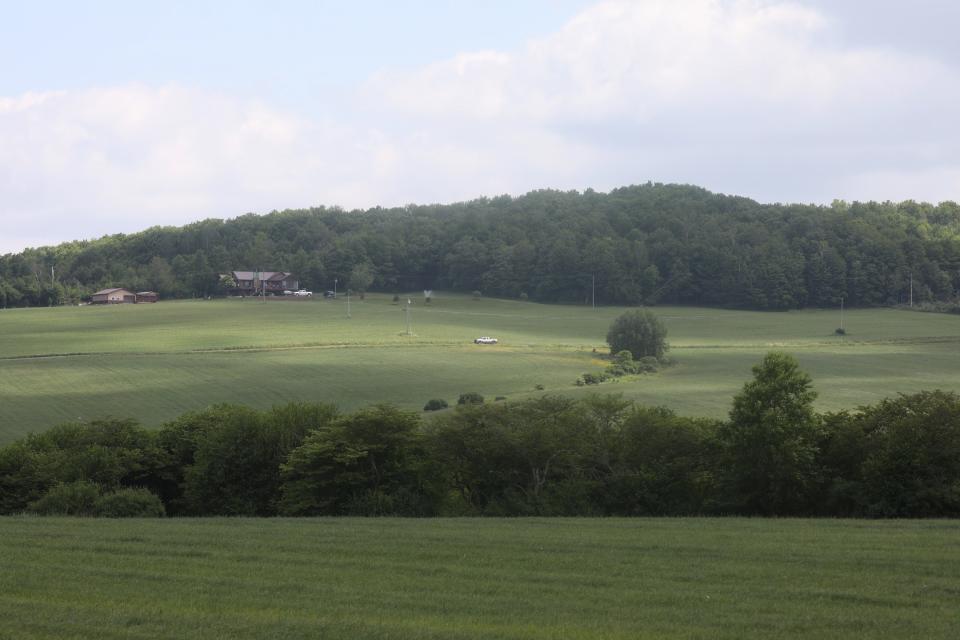
The company is negotiating PILOT (Payment in Lieu of Taxes) agreements that would assist Farmersville and neighboring Franklinville pay for road repairs and other needs.
“Of course this project would help the town of Farmersville with funds for the many road repairs especially,” Councilman Richard Westfall said in an email when asked to discuss the project. “Why talk to me, anyone should be able to figure it out?”
Brown, Schroder and others have noted that several local elected officials have contracted with Invenergy to lease portions of their property for turbines, evidence of a conflict.
Invenergy touts the payouts to farmers in its promotional material.
“Wind power is the new cash crop for farmers and landowners,” the company says on the website for the Canisteo project, nothing that $49 million in payments will be made to landowners during the first 20 years of the project. Another $2.3 million per year will come in PILOT and host community payments.
Alle-Catt will deliver $3 million per year in PILOT and host community agreements.
State officials also boast of the revenue that will go to farmers.
In its 2020 decision approving the Alle-Catt project, a state siting board noted in a press release how it will generate $2.7 million in annual payments to local landowners. “This consistent stream of supplemental revenue can protect against fluctuating commodity prices and help maintain family farms,” the release said.
And, Brown and other critics say, the energy generated for the project won’t be used locally. It will be sent down to the lower Hudson Valley and New York City.
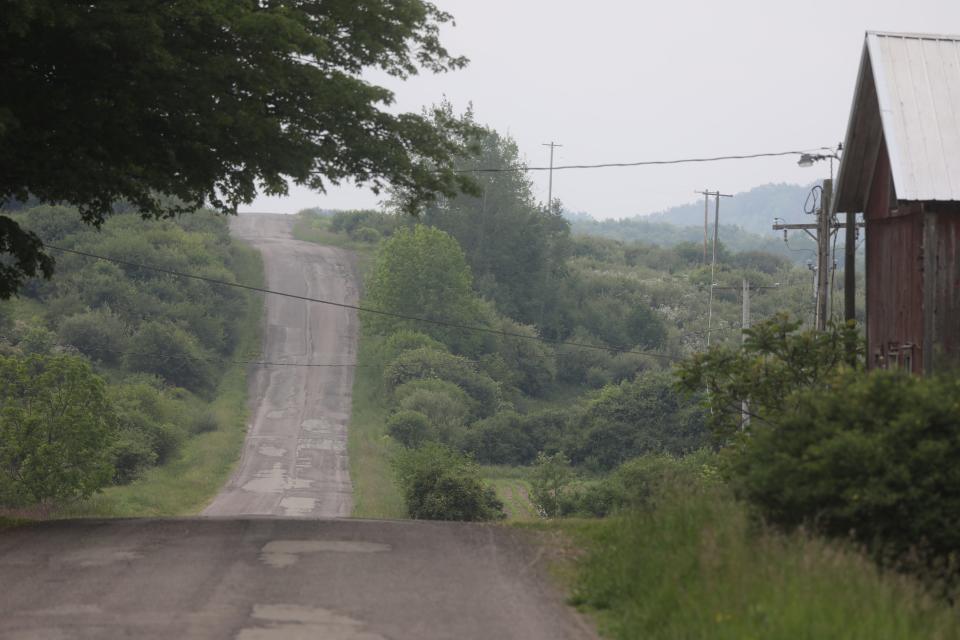
Invenergy recently asked for an extension of time to build the project since currently there are no transmission lines that will deliver the wind energy to the grid – an obstacle threatening to slow the state’s renewable build-out.
“Why are we subjecting ourselves to this pain and suffering when we don’t have to,” Brown said. “We don’t get any kind of tangible benefit from it.”
Insurance: The dull way Americans are being forced to care about climate change risk
Residents fear what will happen to the eagles that soar over their property after trips to nearby Harwood Lake.
Ludmilla Tabaczynska knows they’re around when her chickens raise a ruckus.
“We moved here because we want green hills and birds and trees and I really don’t like the idea of wind turbines, especially the 600-foot tall ones,” she said. “They’re like big metal monsters among the hills.”
Can Cornell program make up for eagles killed?
The DEC analysis of the Alle-Catt and Canisteo projects reads like a declassified intelligence report. The locations of eagle nests are blacked out as if they were state secrets.
The reports document the DEC’s concerns with the project’s impact on nearby nests. For Alle-Catt, there are nine breeding territories within ten miles of the project, seven still active. At Canisteo, there are seven nests within ten miles.
The agency’s wildlife biologists estimate of 41 eagle kills tied to Alle-Catt is pegged to the average annual productivity of 1.3 eagles per year at a nest within two miles of the project, multiplied by the 30-year life of the project. Two more deaths are added for eagles flying through the area.
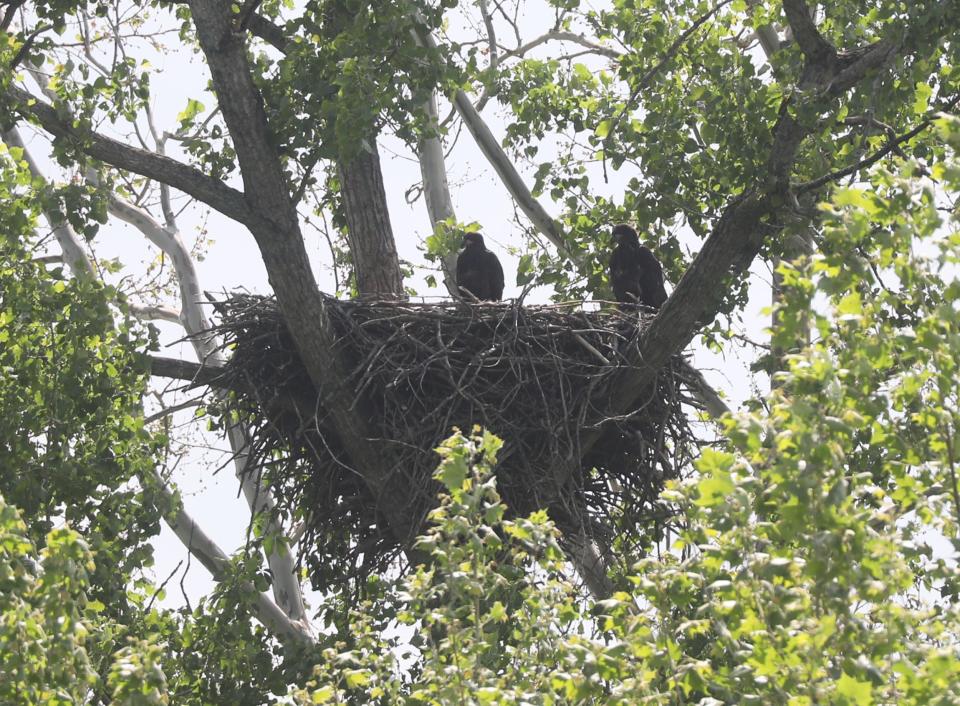
It notes that younger eagles have longer tails and are broader than adults and not as skilled at maneuvering. “These physical traits suggest that young bald eagles may have less of an ability to avoid collisions,” they note in 2019 testimony on the Alle-Catt project.
They say the collision rate for eagles has been “understudied,” citing one study which tallied 49 collisions in 16 states between 2013 and 2018.
“As the number of wind turbine facilities has increased, and the Bald Eagle population has increased, the number of collisions has increased,” DEC wildlife biologists Scott Crocoll and Anne Rothrock concluded in 2019.
The Janet L. Swanson Wildlife Hospital and Bald and Golden Eagle Health and Conservation Program at Cornell will treat and rehabilitate 75 to 85 eagles with a goal of returning them to the wild.
The $1.997 million payout will pay for faculty and staff, cages, equipment and satellite transmitters. The payout covers the Canisteo and Alle-Catt projects.
The U.S. Fish and Wildlife Service has not reviewed the arrangement with Cornell.
But in 2009 the service created a set of regulations to authorize incidental injury and deaths of eagles, known as “take.”
“Under these regulations, any take of eagles that is not consistent with the species’ preservation must be offset with compensatory mitigation,” the service says.
Offset means reducing other eagle deaths by “an amount equal or greater than the unavoidable mortality or increasing the eagle population by an equal or greater amount.”
The state DEC has similar regulations.
Project opponents accuse the DEC of too narrowly defining the impact on the eagles’ habitat.
Karen Schneller-McDonald, an expert hired by citizen groups opposed to the projects, said the DEC successfully returned eagles to the wild by protecting their habitat.
“Eagle habitat is not only defined by a nesting tree or feeding area—it is also airspace; migration routes and travel corridors that link nesting and feeding areas,” Schneller-McDonald writes.
She said the DEC failed to follow its own guidelines before signing off on the Cornell agreement, also known as a net conservation plan.
“Wind towers should not be sited in areas where they will negatively affect nesting, roosting, daily foraging movements or migration of bald eagles,” the DEC concluded in a 2016 conservation plan for eagles. “Movements between both nests and foraging areas and winter roosts and foraging areas should be taken into consideration.”
Gary Abraham, the attorney for citizen groups, says the DEC has ignored concerns about eagle habitats to justify a renewable build-out, which envisions a carbon-free electric grid by 2040. He said the net conservation plan should have included creating a habitat where eagles could thrive rather than a rehabilitation program.
“They believe climate change justifies just about everything,” Abraham said.
The agency defends its decision on the projects.
“DEC is committed to upholding the strong state and federal requirements in place for the overall protection of endangered and threatened species for all projects that pose an impact to listed species and their habitat,” DEC said in a statement.
Cornell’s Sara Childs-Sanford, the school’s section chief for wildlife medicine, said the project will improve the health of bald and golden eagles through veterinary care and research. “Cornell is proud to support the renewable energy industry and efforts toward a more sustainable future that is safer for the environment,” Childs-Sanford said. “The recovery of bald eagle populations is a great conservation success in the United States, however both bald and golden eagles remain threatened by numerous pressures that impact their health and population growth."
Eagle's defenders don't want to lose them
At least twice a week, Jackie Bakker heads out to the Montezuma refuge to spy for eagles and other birds − sightings shared on the Friends of Montezuma Wetlands Complex site. On June 21, she posted a picture of a fledgling bald eagle at Benning Marsh.
She’s all for renewable energy but has great affection for the eagle.
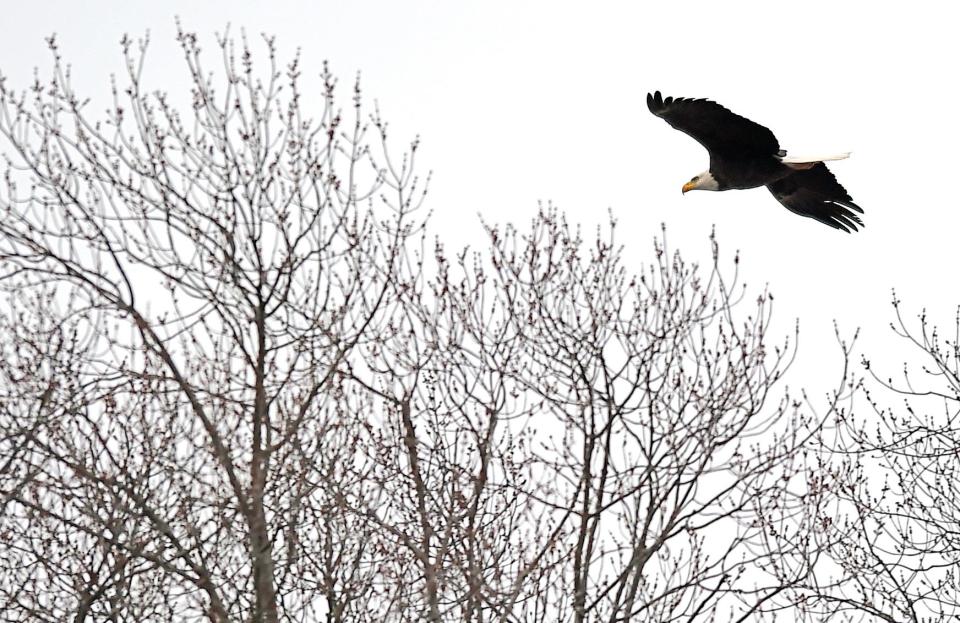
“I am in love with our bald eagles and I don’t want any of them to die,” Bakker said. “It’s nature and it’s a cycle and animals are born and animals die and so I try to be realistic. But sometimes my heart kind of interferes.”
Dan Jordan understands the sentiment.
Jordan, 69, was coming home one night a few years back when he spotted a bald eagle in a tree beside his home on the Allegany River.
The retired marketing executive who took wedding photos on the side, decided he wanted to photograph eagles. He estimates he’s taken 340,000 photographs since 2016.
“I spent an hour photographing the two eaglets practice flying and consuming a huge fish and adult had dropped off for them,” he wrote one day in June. “They will be fledging any day now. I hope that I am there to capture their special moments.
He questions whether the Cornell program will actually return eagles to the wild.
“If it’s true that we’re going to slaughter that many eagles then I don’t really see that $2 million is going to accomplish a lot,” Jordan said. “We’re gonna pay $2 million to teach people how important eagles are to preserve by killing them. It’s a circular logic to me.”
For subscribers: How dead whales became the symbol of a political battle in NJ and elsewhere
Morris is writing a book about her days hacking eagles at Montezuma. It will discuss the many threat eagles and other birds continue to face.
Acquaintances unaware of her past tell her about the eagle they recently spotted in their backyard.
“And I'm thinking, yeah, that's pretty incredible,” Morris said. “You have no idea how incredible that is. People don't realize how important it is to keep an eye on them and just not take it for granted that they're there. Because they could disappear again. And we just can't, we can't be vigilant enough.”
This article originally appeared on USA TODAY NETWORK: Bald eagles saved in New York now at risk with wind farm projects

